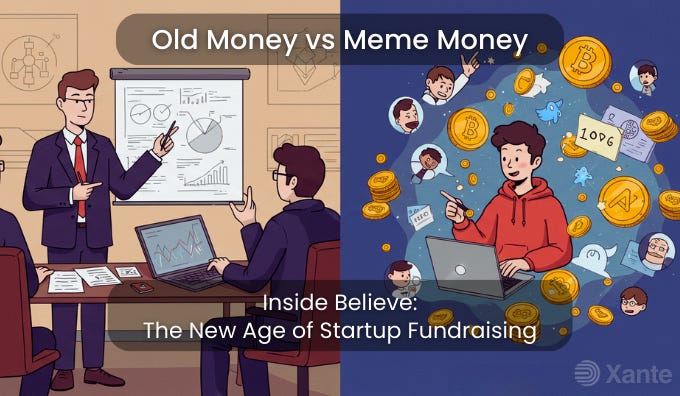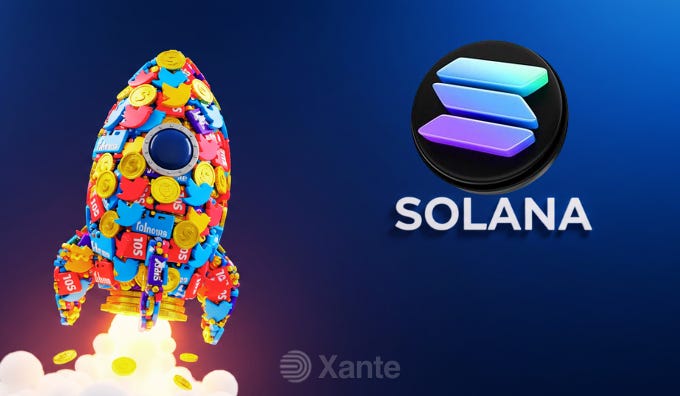Inside Believe: How Internet Capital Markets Are Disrupting Startup Fundraising in the Meme Era
Discover how Believe is transforming startup funding through a community-powered model where attention becomes capital. Learn how builders can launch tokens, validate ideas, and grow fast with real examples, insights, and actionable tips.
Can Memes Really Fund Your Startup? Welcome to the Era of Internet Capital Markets
Imagine launching a startup not with VCs or pitch decks but with a meme, a tweet, and a growing crowd of believers who fund your idea before you even write a single line of code.
Sounds like a fantasy? Welcome to Believe.
In this post, we get into how @BelieveApp and @Launchcoin are pioneering a new model of capital formation: the Internet Capital Market. A model where attention is not just noise, it’s currency. Where meme coins aren’t just jokes, they’re signals of demand. And where builders can validate their ideas and bootstrap capital, simply by inspiring belief.
We’ll explore:
What Believe is and how it works
Why it’s making waves in crypto
What this means for early-stage builders
Real-world examples and actionable steps to launch
Risks, compliance, and future outlook
This isn’t just a trend, it’s a radical shift in how people fund, build, and launch ideas in the Web3 age. Let’s get into it.
What Is Believe and Why Is Everyone Talking About It?
Believe is a token launchpad built on Solana that merges SocialFi + early-stage fundraising.
It lets builders, solo or teams launch their own token by simply tweeting an idea with a custom ticker and tagging @launchcoin. If the token gains enough traction (i.e., buyers), it reaches a $100K market cap milestone and “graduates” to open trading status, unlocking creator fees.
Think: Kickstarter meets Twitter meets memecoin season but with actual utility down the line.
“We’re building a new way to fund the future, where attention becomes capital.”
— Believe Playbook
Believe isn’t just a meme coin factory. It’s a permissionless platform for validating demand before building, and for incentivizing community belief around new projects.
How It Works: From Idea to Launch in 5 Simple Steps
Let’s break down how the Believe model works, step-by-step.
1. Tweet Your Idea
Draft a clear tweet introducing your project.
Include a unique ticker: $TICKER
Tag @launchcoin in the main tweet (not replies!)
Example:
“Launching $STORY; a gamified fiction writing platform where users earn tokens for stories that go viral. Let’s build together. @launchcoin”
2. Connect Your X (Twitter) Account to Believe
Sign up on the Believe app (iOS or Android).
Link your Twitter/X account to claim ownership of your token and future earnings.
3. Gain Traction: Hit $100K Market Cap
Your token launches and is available for trading.
If enough users buy in and the market cap hits $100K:
The token graduates to Meteora (a curated trading list).
You can now claim 50% of the platform fees.
The token becomes fully tradable on DEXs like Phantom, Jupiter, and DexScreener.
4. Claim Your Fees
Fees split: 50% to you, 50% to Believe.
Fees unlock only after you’ve linked your X account and met the milestone.
If you mislead or act maliciously? Your fees get blocked.
5. Start Building
Use the funds to ship your MVP.
Keep your community engaged and updated.
Build trust by posting regularly, joining X Spaces, and sharing a roadmap.
Real-life Case:
A solo builder launched $READ, a crypto-native book club platform. They tagged @launchcoin, posted a 90-second video introducing the vision, and hit $110K cap in 48 hours. Now they’ve hired a part-time dev and launched an MVP.
Why This Model Works: The Flywheel Effect
The brilliance of Believe lies in its growth flywheel:
Builders launch with no-code, no capital, just community.
Communities invest not for ROI, but for belief.
If the idea is strong, traction grows → token reaches milestone.
Builders use fees to fund the project → product launches.
Product drives utility → token demand sustains or grows.
Example:
Think about how $DOGE became a $30B+ memecoin off the back of community, memes, and attention. Believe is saying: What if we used that energy to fund real ideas?
Is It Legal? Navigating Compliance in Meme-Fueled Markets
This is a critical question for any builder.
Believe’s Legal Guidance in a Nutshell:
Do not promise returns. This avoids securities law violations.
Don’t market your token as equity.
Avoid words like “investment” or “yield.”
Treat tokens as digital merch, not shares.
Keep your messaging transparent and fun, not financial.
Analogy: Think of your token like a tour t-shirt. People buy it because they believe in your “band” (your idea). They’re not promised profits, just community access and a front-row seat.
Growing a Community Around Your Coin
Your coin’s success is only as strong as your community.
Here’s how to keep your believers engaged:
Post 3x/day on X with updates, memes, and milestones.
Pin the contract address tweet to your profile.
Host weekly X Spaces to interact live with your audience.
Create a public roadmap and share progress transparently.
Build a Telegram or Discord server for diehard supporters.
Real-World Strategy:
The founder of J 0.00%↑ OURNAL, a crypto writing tool, hosted daily X Spaces and created “meme-of-the-day” posts. This increased their holder base by 40% in just 5 days.
What Happens After Launch?
Once your token hits $100K cap:
It’s live on DEXs
Fees begin accumulating
Your job? Start delivering.
Keep the hype alive with:
Weekly demo drops
Public AMAs
Dev logs
Community polls
This builds a real feedback loop, just like YC-style weekly check-ins, but public and transparent.
Key Takeaways
Believe turns attention into startup capital.
Tokens validate market demand before building.
Builders keep 50% of the fees, if they hit the cap.
Compliance is key: don’t offer financial returns or equity.
Community engagement = long-term value.
Future Outlook: Will Internet Capital Markets Go Mainstream?
We’re in the early innings of community-powered venture funding.
Predictions:
VCs will begin tracking tokens as early signals of PMF.
More founders will bypass traditional funding entirely.
We’ll see hybrid launches tokens + products built in parallel.
Regulations will tighten, especially around implied value and promises.
As attention becomes capital, new ecosystems like Believe could redefine how we fund, validate, and build startups in public.
Stat to Watch:
In its first month of virality, Believe onboarded 100+ projects and generated over $5M in trading volume. That’s real market behavior not vaporware.
Conclusion: Should You Launch on Believe?
If you’re a:
Solo founder testing a crazy idea,
A small team without VC access,
Or a dreamer who wants to build in public.
Believe might be the best first step.
The beauty of this model? You don’t need code. You don’t need a deck.
You just need belief and a community willing to back it.
So ask yourself:
“What’s the boldest idea you believe in? Would others believe too?”
Maybe it’s time to find out.
Ready to Launch? Here’s What to Do Next
Download the Believe app (iOS/Android)
Connect your Twitter/X account
Draft your idea tweet with $TICKER
Tag @launchcoin in the main post
Share your story. Build your community. Start shipping.
If you enjoyed this breakdown, share it on Twitter and tag @believeapp to let them know we’re watching.
Subscribe to our newsletter for expert analysis and join our WhatsApp channel to continue the conversation. For daily updates, follow us on all socials; Instagram, Twitter, Telegram, and TikTok.
This article is for educational purposes only and should not be considered financial advice. Always conduct your own research (DYOR) before making any investment decisions.





